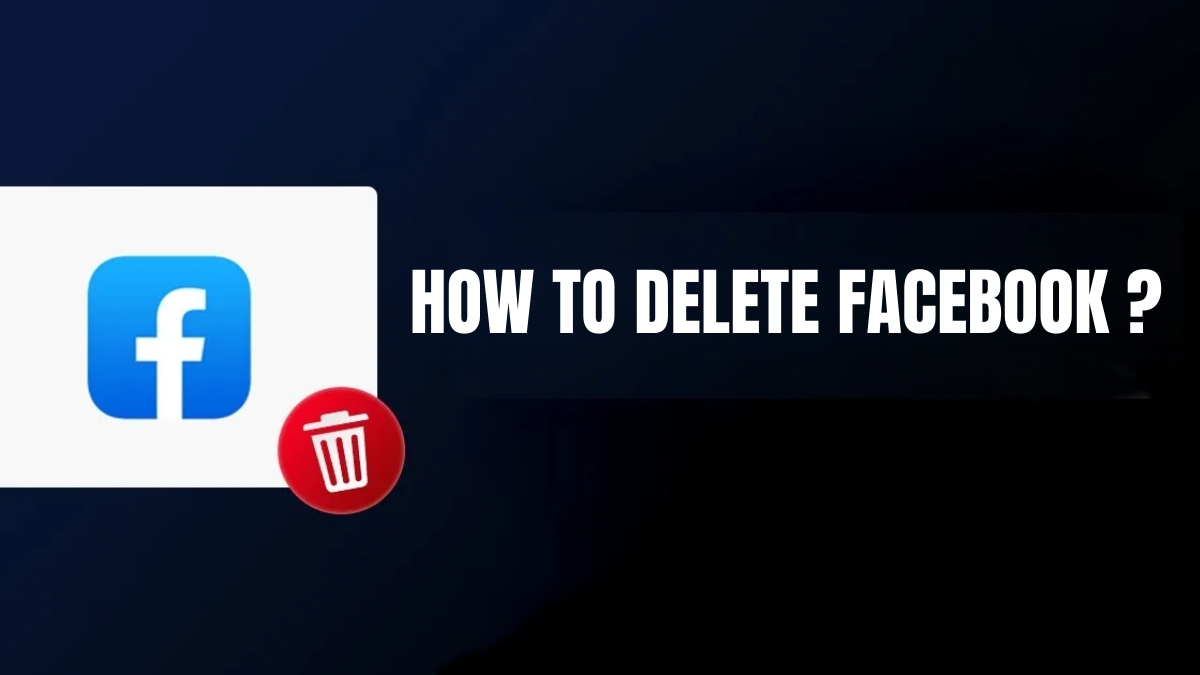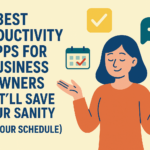So you’ve finally decided to break free from the trap that Facebook’s network has become? In this article, you will learn how to delete your Facebook account and give your attention to better things.
Facebook’s Declining User Base
Facebook has been a platform that grows. But on 3rd February 2022, the BBC reported that the social media giant’s daily active users (DAUs) dropped for the first time in 18 years. The global numbers have been in one direction for every quarter in its existence. Growth has stalled in Europe and the US, though, masked by rises in users worldwide. Facebook isn’t as popular with younger people as it was, as competition has hurt business. Chances are you use it less than ever, and every time you log in, you’re greeted by a slurry of reheated viral news and life updates from distant acquaintances. Now, though, feels like a perfect time to pull the plug.
The Engagement-First Model of Social Media
The premise of any AI-driven social media feed—think Facebook, Twitter, TikTok, YouTube—is that users don’t need to tell what they want to see. Instead, just by observing what you like, share, comment on, or linger over, the algorithm learns what catches your interest and keeps you on the platform by showing you more of the type of stuff you like. In a sense, this design feature gives social media companies and their apologists a convenient defense against critique: If certain content is going big on a platform, that’s because it’s what users like; so if you have a problem with that, perhaps your problem is with the users. Yet, many criticisms of social platforms focus on their optimization for user engagement at the same time. An algorithm heavily focused on engagement might push users toward content that might be highly engaging but of little to no social value.
Congressional Hearing on Social Media Platforms
In worst cases, it can contribute to social devaluation by feeding users with ever more engaging posts because they are ever more extreme. And this might encourage the viral proliferation of false or harmful material because the system prioritizes what will trigger engagement rather than what might be helpful for the users. The list of ills associated with the engagement-first model explains why neither Mark Zuckerberg, Jack Dorsey, or Sundar Pichai would admit that the platforms under their control are programmed that way at all during the March congressional hearing. Consider this statement from Robin Kelly, an Illinois Democrat: “The business model for your platforms is quite simple: keep users engaged. The more time people spend on social media, the more data harvested and targeted ads sold.
Social media platforms amplify content that gets attention to achieve building engagement. That can be cat videos or vacation pictures, but too often, it means incendiary content that contains conspiracy theories or violence. Algorithms on the platforms can actively funnel users from the mainstream to the fringe, subjecting users to more extreme content to maintain user engagement. This is a fundamental flaw in your business model that mere warning labels on posts, temporary suspensions of some accounts, and even content moderation cannot address. And your companies’ insatiable desire to maintain user engagement will continue to give such content a safe haven if doing so improves your bottom line.”
Denials and Defenses from Social Media Executives
Bill Johnson, a Republican from Ohio, compared the addictiveness of social platforms to cigarettes. “You profit from hooking users on your platforms by capitalizing off their time,” he said, addressing Dorsey and Zuckerberg. “So yes or no: Do you agree that you make money off of creating an addiction to your platforms?”
Both executives said no. They repeatedly did, along with Pichai, when asked whether their platforms’ algorithms are optimized to show users stuff that will keep them engaged. Rather than defending their companies’ business model, they denied it.
Zuckerberg’s Defense and the Future of Social Media
Zuckerberg, in particular, suggested that maximizing the time users spend on the platform is the furthest thing from the plan. “It’s a common misconception that our teams even have goals of trying to increase the amount of time that people spend,” he said. He insisted that the company’s true goal is to foster “meaningful social interactions.” Misinformation and inflammatory content thwart that goal. If users spend time on the platform, it simply proves that the experience is meaningful. “Engagement,” he said, “is only a sign that if we deliver that value, then it will be natural that people use our services more.”
Zuckerberg is confident in what he’s made to keep people coming back. But unfortunately, while using the motive of connecting the world, social media platforms tried their users to get addicted to their sites and apps and are now themselves addicted to the attention of their users and the data that helps them cater ads based on it. If you no longer want to be a part of the game and want out, if you have finally decided to break free from the trap that Facebook’s network has become, Here’s how you can do it.
How to delete a Facebook account?
How to delete a Facebook account?
If you delete your account, you won’t be able to reactivate it after the 30 days to cancel your account deletion is over. After this, you can’t access your account or retrieve any information from it. Facebook will permanently delete your profile, photos, videos, and everything else you’ve ever added. You can no longer use Facebook Messenger. You can’t use your Facebook account to log in to other apps you may have signed up for with your Facebook account. Moreover, you may need to recover those accounts by contacting the apps and websites. Information like the messages you sent to friends may still be visible to them after you delete your account, as copies of messages you have sent are stored in your friends’ inboxes.
To delete your account:
- Click on the menu icon appearing on the top right of Facebook.
- Select Settings & Privacy, Then select Settings.
- Click Your Facebook Information in the left column.
- Click Deactivation and Deletion.
- Choose Permanently Delete Account, then click Continue to Account Deletion.
- Click Delete Account, enter your password, and then click Continue.
How to deactivate a Facebook account?
When you deactivate your account, you can reactivate it later, meaning you can reaccess your data and connections. In the meantime, people can’t see your timeline or find your account in a search unless you reactivate it. However, some things may remain visible (for example, private messages you sent). You can reactivate your account by logging back into Facebook or using your Facebook account to log in somewhere else. You’ll need access to the email or mobile number you use to log in.
To deactivate your account:
- Click on the menu icon appearing on the top right of Facebook.
- Select Settings & Privacy. Then select Settings.
- Click Your Facebook Information in the left column.
- Click Deactivation and Deletion.
- Choose Deactivate Account, then Continue to Account Deactivation and follow the instructions to confirm.
When Your Facebook account is deactivated, and you still have Messenger: you can chat with friends on Messenger. Your Facebook profile picture will show in your conversations on Messenger. In addition, other people can search for you to send you a message via Messenger.
How to delete a Facebook account on the phone iPhone or Android?
- Open the Facebook app.
- Tap the hamburger icon on the top-right corner.
- Scroll down and click on Settings & Privacy and click on Settings.
- Tap Personal and Account Information.
- Click on Account Ownership and Control. If you have access to a page, click on Profile Access and Control.
- Tap on Deactivation and Deletion.
- Then select Delete Account and click on Continue to Account Deletion.
- Choose from the reasons on the screen or click on Continue to Account Deletion.
- Scroll down and select Delete Account.
How to delete a Facebook account without a password?
Do you have an old Facebook account that you no longer use with posts or pictures from your immature days that you don’t want people to see? Of course, it’s easy deleting your account if you still have access to it. But what if you can not remember the login information?
These are the steps you can take to recover account access to permanently delete your account and the associated unwanted memories from the past.
Recovering your Facebook account’s password
Go to https://www.facebook.com/login/identify to search for your account. You can search by the email or phone number you used to set up the profile or just by name. Although there is no mention of entering the email or phone number, it works. Depending on your privacy settings, your account may or may not show up if you search with a name. If it doesn’t show up, click “I’m not on this list,” and you’ll be prompted to provide the name of a friend to try searching again.
Once you find your old account, you’ll be able to send a reset code to any of the email addresses or phone numbers linked with your account. If you’re unsure which email address you used, Facebook will show you a redacted version (e.g., n*******e@hotmail.com) that should spark your memory. If you don’t have access to the email address or phone number anymore, try hard to regain access.
Use Facebook’s Trusted Contacts
If you can’t access your account’s email address or phone number, your other hope is Facebook’s Trusted Friends feature, launched in 2013. This feature helps you regain access to your account in case of forgotten credentials with the help of three “trusted friends” to receive a reset code. The problem with Trusted Friends is that you had to have set it up in advance for your account.
How to Set Up Trusted Contacts on Facebook for Account Recovery
Setting up Trusted Contacts on your Facebook account is a smart way to ensure you can recover your account if you ever get locked out. First, navigate to Settings and then to Security and Login Settings. From there, select friends you can contact in case of a lockout situation. Click Edit, choose friends, and follow the on-screen instructions.
If, at any point, you lose access to your email or phone, don’t panic. Simply select “No longer have access,” and Facebook will provide you with the option to enter a new email or phone number. Click on “Reveal My Trusted Contacts” and type the full name of one trusted contact. Facebook will then generate a unique URL for each friend.
Each URL contains a recovery code necessary to reset your account. Reach out to your trusted contacts and share the URL with them so they can help you reset your account. However, if you find that you can’t reach one of your trusted friends, unfortunately, you’re out of luck.
It’s important to note that if you haven’t set up Trusted Contacts already, it’s too late to do so now. Similarly, if you can’t access your email, you won’t have the option to provide a new email or phone number. In such a scenario, Facebook will prompt you to try logging in again. Make sure you set up Trusted Contacts proactively to avoid any potential issues in the future.
Report your account as fake
While Facebook makes deleting an old account difficult, deleting a fake account is more convenient. Users have reported reporting their old accounts as fake and getting them deleted.
To report your old account as fake:
- First, go to the profile of your old account.
- Then click on the three little dots on the bottom right of the cover photo.
- Then select Give feedback or report this profile.
- Next, click on Pretending to Be Someone and then click Me.
What can you do if none of these work?
For security reasons, Facebook will allow you to delete your account only if you can access it through one of the two methods above (or the “unofficial” workaround). Those photos of your ex-relationships, nights of a drunken bender, and bad hairstyle choices will continue to live on in the Facebook universe forever.
However, you may be able to pursue avenues outside Facebook’s standard deletion policies. For instance, if you live in the EU, the GDPR allows consumers to demand companies delete their personal request information. If Facebook does not respond to a request, you may be able to take the issue up with your country’s privacy officer.
According to Facebook’s Privacy Policy, you can resolve disputes through a third-party company called TrustArc. However, Facebook has been reported to be blocking its link to the TrustArc feedback form as malicious (irony noted). So instead, you can use Facebook’s Data Policy Help Center Contact form or send a snail mail letter to:
Facebook, Inc.
ATTN: Privacy Operations
1601 Willow Road
Menlo Park, CA 94025
Since these aren’t officially sanctioned means of getting your account deleted, we don’t know what your likelihood of success will be.
FAQs
How can I permanently delete my Facebook account?
You can do a few things that feel like deleting your Facebook account, but you’re not deleting your account—deleting the app from your phone? Cathartic, maybe, but functionally useless—deactivating your Facebook account? Better, in that, you mostly disappear from the platform, but it still holds onto all your data, waiting patiently and indefinitely for your return.
And when you delete your Facebook account, note that Facebook lets you reverse an account deletion within 30 days. So until this 30 day period is over, your account stays deactivated and is then permanently deleted. And for an account and all its data to be entirely deleted, Facebook needs up to 90 days.
How to delete a Facebook account permanently without waiting 14 days?
Previously, the number of days you had if you changed your mind to reverse account deletion. This period has now been increased to 30 days. To increase the likelihood of the addiction to win as users relapse to a social media platform programmed to get them addicted because their attention is profitable for them.
Take your time in making your decisions. Allow yourself to make better decisions than those made in haste or when overwhelmed by emotions. So when you decide to delete your Facebook account, make sure it’s a well-thought-out decision. So when you finally make it, you stand by it. Once you delete your Facebook account, it shouldn’t matter to you how many days you will have to wait before you’re sure that your account is permanently deleted. Consider it deleted forever and move on. Knowing that you won’t give up no matter the number of days Facebook waits for you to relapse.
Conclusion
Social media users often find themselves consumed by rage over posts, realizing they waste time on things that make them miserable. Impulsive behavior doesn’t always reflect true preferences; it’s akin to mindlessly devouring addictive snacks and regretting it later. Nicole Bonoff from Twitter suggests that relying solely on user behavior data might not reveal accurate preferences. During a congressional hearing, Anna Eshoo and Jan Schakowsky proposed a bill to ban the surveillance advertising business model employed by platforms like Facebook. According to Hany Farid from UC Berkeley, platforms prioritize engagement over truth and may even benefit from harm and divisiveness.
Mark Zuckerberg’s statements about fostering meaningful social interactions on Facebook raise skepticism, given the platform’s profit motives and questionable algorithmic practices. The consolidation of vast amounts of user data under Zuckerberg’s control raises concerns about privacy and user autonomy. People are becoming increasingly aware of the ramifications of entrusting their data to tech giants like Facebook, signaling a potential shift in user behavior towards reclaiming control and privacy. Deleting your Facebook account might be a step towards empowering users and holding tech companies accountable for their actions.












